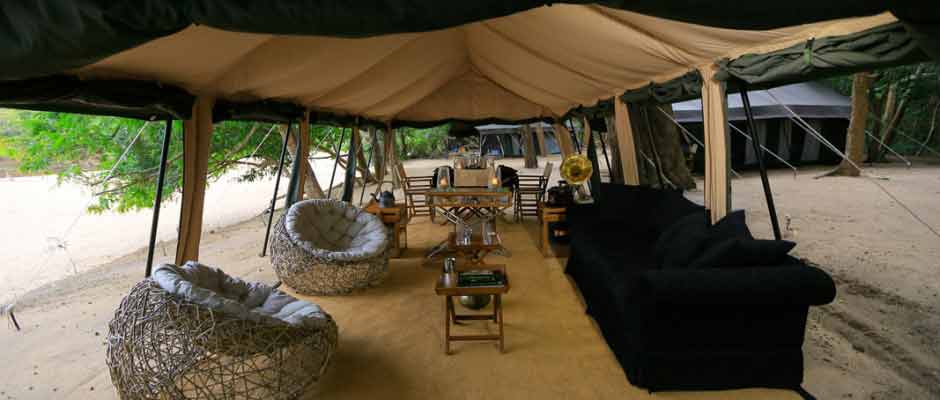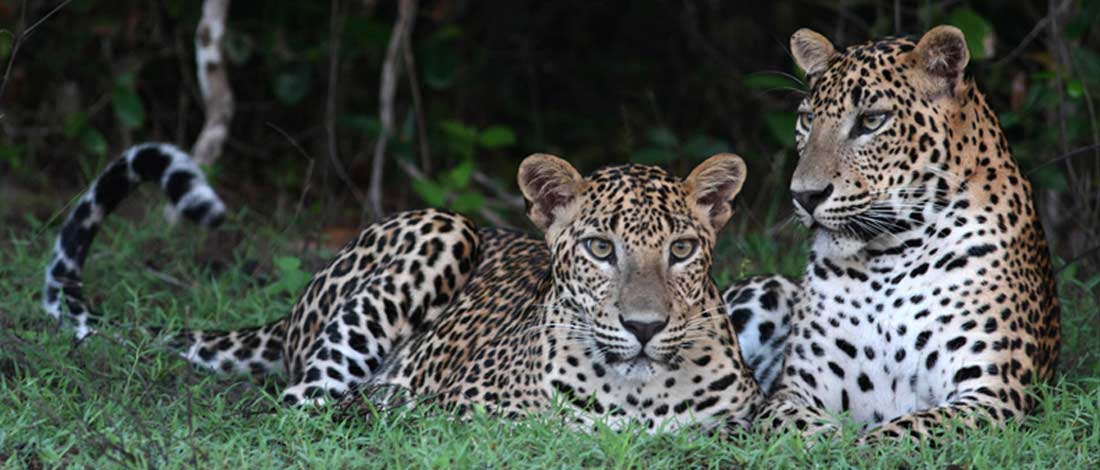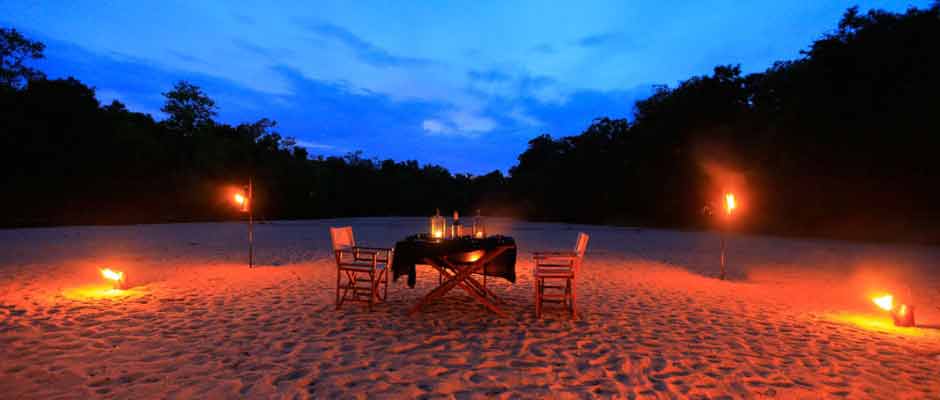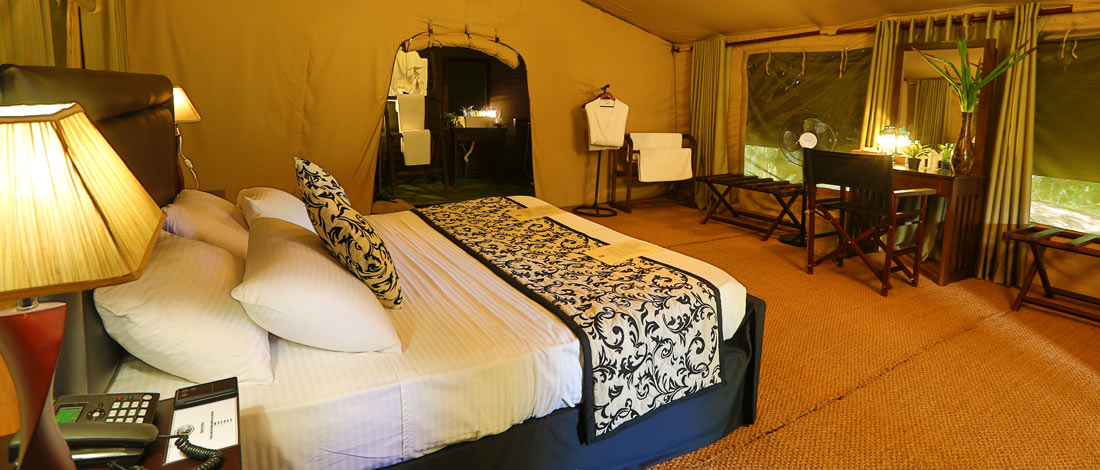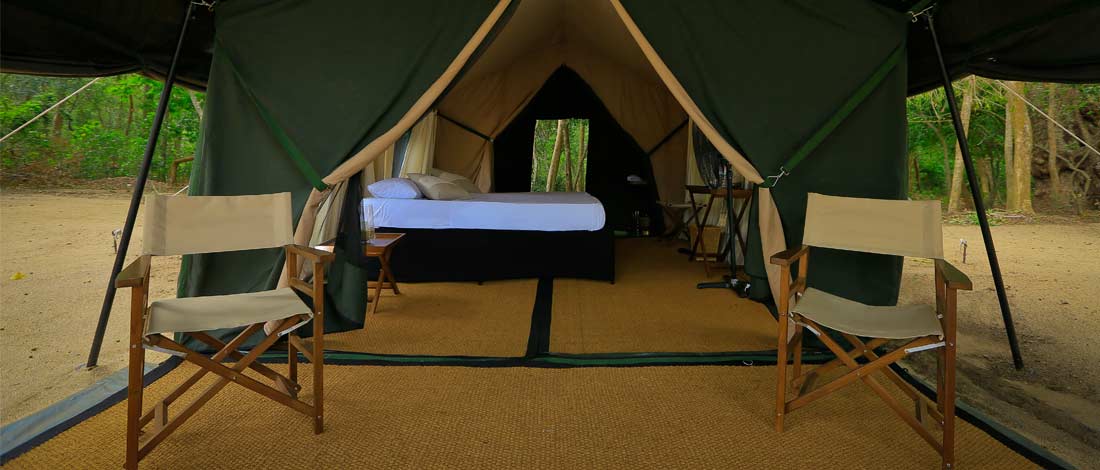Accommodation
Leopard Trails, Yala & Wilpattu
Overview
During the grand era of the British dominion, Ceylon was one of the worlds most sought after locations for truly exotic expeditions. The 1800’s witnessed the arrival of British adventurers such as Samuel L. Baker, and with them, hunting and exploration safaris replete with a small army of butlers, cooks, and trackers. These explorers did not travel in a rough, rustic manner, but enjoyed well-furnished, spacious tents fully stocked with the finest food and drink. At the glorious height of the empire, a complete bar, expert cooks, local guides and the best camping paraphernalia were not out of the ordinary, but expected. These bespoke safaris expertly anticipated every possible need or want of British explorers in wild Ceylon.
Today, Leopard Trails Bespoke Tented Safaris returns to the original spirit and true essence of ‘safari’, reminiscent of a golden era – an era of elegance, romance and adventure. We aim to provide a Sri Lankan safari experience in spectacular solitude and soothing comfort – with only the canvas walls of your tent separating you from the wonders of our remarkable bio diversity. We aim to provide an authentic back to nature experience that needs to be experienced to be appreciated.
Location
Yala National Park & Wilpattu National Park
Available services
Rooms
Leopard Trails bespoke tented safaris redefine the original tented safari with convenient modern-day amenities, all the while staying true to the romantic ambience of a by-gone British colonial era filled with adventure. Mobile Camping is the most authentic form of safari, a true immersion into the sights and sounds of the wilderness.
Dining
Enjoy predominantly local cuisine specifically prepared for a foreign palate with the freshest ingredients by our specially trained cook and served by an attentive staff. Dine under the stars, in our dining tent or even in the river! We do cater to vegetarians and others with specific requirements if informed in advance. Please make sure you fill out and return to us the guest questionnaire which we send all direct customers and travel agents. We serve a variety of Sri Lankan, Asian, and Continental cuisine.
Activities & Highlights
Yala National Park
If viewing a diverse array of wildlife is at the top of your agenda then Yala national park is the place to visit. The vegetation consists of scrub jungle, lakes, and brackish lagoons to riverine habitat. Is one of the most visited national parks in the country and is divided into 5 Blocks and it is Block 1 which covers over 14,000 hectares that is most frequently traversed.
Yala’s main draw is the leopard and it is said to be one of best places in the world to view leopards. It has been theorized that Yala may have the highest density of leopards in the world. However, on a safari with Leopard Trails we make it a point to showcase the diversity of wildlife that Yala has to offer. On a two night stay it is possible to spot and identify over a 100 species of birds. The density of mugger crocodiles within Yala is also quite an underrated feature of the park. Yala is also one of the better places in Sri Lanka to come across tusked elephants. At the end of the North-east Monsoon (February), the park is also very good for butterflies. There are 2 main rivers flowing through Yala, the Manik Ganga and the Kumbukkan Oya and these two rivers serve as the lifeline to the park during the drier months.
In Yala watch out for:
Leopard (Panthera pardus kotiya)
Asian Elephant (Elephas maximus maximus)
Mugger Crocodiles (Crocodylus palustris)
Sloth Bear (Melursus ursinus)
Ceylon Junglefowl (Gallus lafayetii)
Sri Lanka Woodshrike (Tephrodornis affinis)
Sri Lanka Swallow (Cecropis hyperythra)
Stone-curlew (Esacus recurvirostris)
Sirkeer Malkoha (Phaenicophaeus leschenaultii)
Blue-faced Malkoha (Phaenicophaeus viridirostris)
Malabar Pied Hornbill (Anthracoceros coronatus)
Black-naped Hare (Lepus nigricollis)
Water Buffalos (Bubalus bubalis)
Spotted Deer (Axis axis)
Sambar Deer (Rusa unicolor)
Grey Langur (Semnopithecus)
Toque Monkey (Macaca sinica)
Stripe-necked Mongoose (Herpestes vitticollis)
Ruddy Mongoose (Herpestes smithii)
Indian Grey Mongoose (Herpestes edwardsii)
Brown Mongoose (Herpestes fuscus)
Wild Boar (Sus scrofa)
Jackal (Canis aureus)
Land Monitor (Varanus Bengalensis)
Mouse-deer (Tragulus Nigricans)
Sri Lanka Green Pigeon (Treron pompadora)
Indian Rock Python (Python molurus)
Wilpattu National Park
Wilpattu is Sri Lanka’s largest national park with an area of 130,000 hectare. It is also the oldest national park which has been reopened after several years of closure due to the armed conflict in the country. A few decades ago it was Wilpattu that was known ahead of Yala for its Leopard population. A unique feature of Wilpattu national park is that the entire park is dotted with large sand rimmed natural lakes known as “Villus”. The Villus collects rain water and tends to attract wildlife especially during the times of drought.
The main draw in Wilpattu is the leopard and sloth bear. It is also one of the better parks to see barking deer. Wilpattu is bounded to the north and south by 2 main rivers, the Modara Gamaru towards the north of the park and the Kala Oya to the south of the park
Wilpattu is not only famous for its wildlife but also for its archaeological and historical importance. About 500 years before the birth of Christ it is believed that Prince Vijaya from India and his followers landed in a place called Thambapanni in the North West corner of Wilpattu and formed the Sinhalese kingdom. There are still many archaeological ruins and stories to be told about this and many other fascinating historical events that took place within the borders of what we now call Wilpattu.
In Wilpattu watch out for:
Leopard (Panthera pardus kotiya)
Asian Elephants (Elephas maximus maximus)
Sloth Bear (Melursus ursinus)
Spotted Deer (Axis axis)
Barking Deer (Muntiacus muntjak)
Mouse-deer (Tragulus Nigricans)
Wild Boars (Sus scrofa)
Water Buffalos (Bubalus bubalis)
Mugger Crocodiles (Crocodylus palustris)
Ceylon Junglefowl (Gallus lafayetii)
Brown-capped Babbler(Pellorneum fuscocapillus)
Black-naped Monarch (Hypothymis azurea)
White-rumped Shama (Copsychus malabaricus)
Ruddy Mongoose (Herpestes smithii)
Indian Grey Mongoose (Herpestes edwardsii)
Purple-faced Langur (Trachypithecus vetulus)
Sri Lankan Grey Horbill (Ocyceros gingalensis)
Oriental Dwarf Kingfisher (Ceyx erithaca)
Greater Thick-knee (Esacus recurvirostris)
Pin-tail Snipe (Gallinago stenura)
Indian Rock Python (Python molurus)




